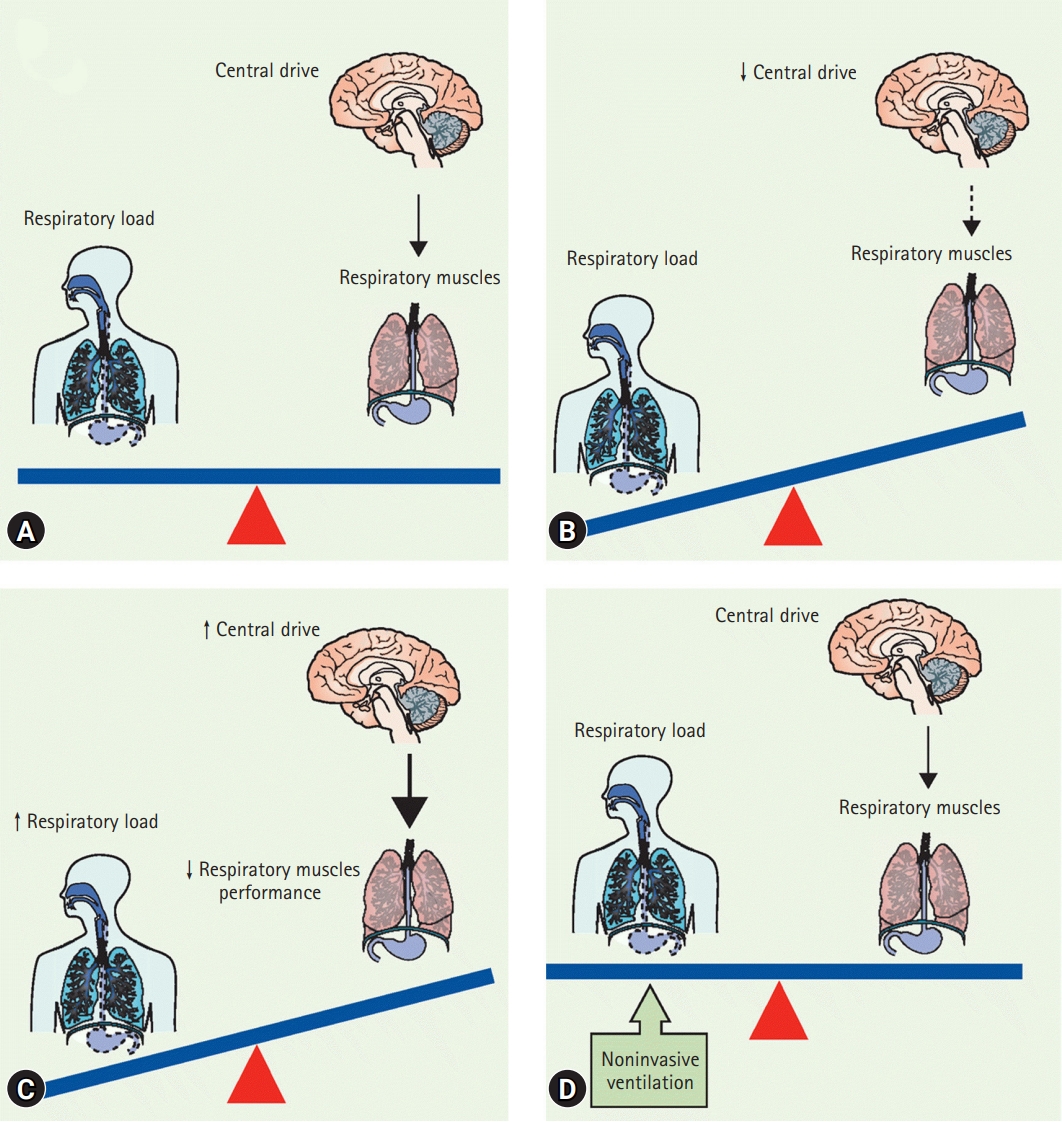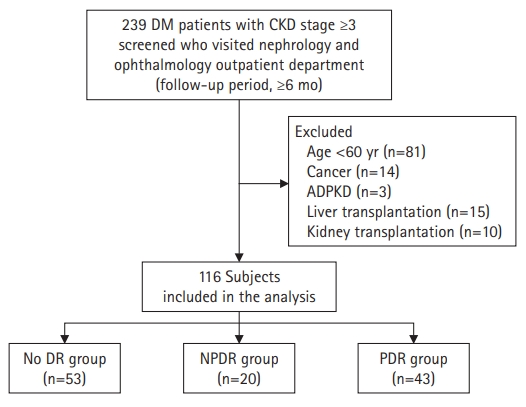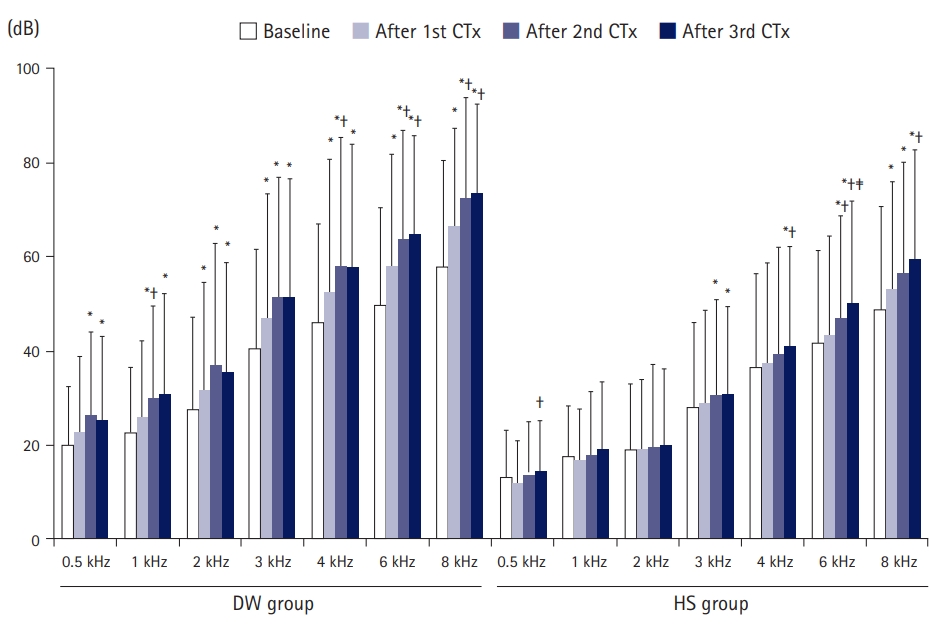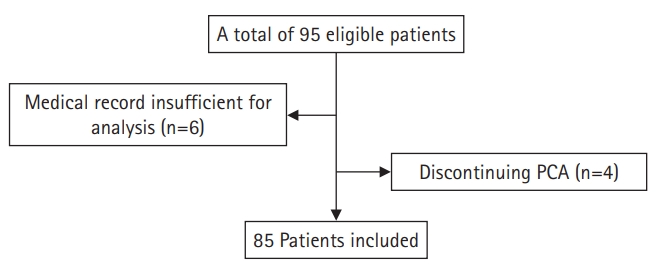Indexed in: ESCI, Scopus, PubMed,
PubMed Central, CAS, DOAJ, KCI
PubMed Central, CAS, DOAJ, KCI
FREE article processing charge

Previous issues
- Page Path
- HOME > Browse Articles > Previous issues
Imagery
- "UNESCO Global Geoparks Baekseoktan Valley in Cheongsong, Korea"
- J Yeungnam Med Sci. 2023;40(2):i. Published online July 7, 2022
- DOI: https://doi.org/10.12701/jyms.2022.00458

- 1,411 View
- 46 Download
Editorial
- Journal of Yeungnam Medical Science is now indexed in Scopus, a great step closer to a journal’s goal
- So-Young Park
- J Yeungnam Med Sci. 2023;40(2):113-114. Published online March 31, 2023
- DOI: https://doi.org/10.12701/jyms.2023.00269

- 995 View
- 51 Download
- 1 Web of Science
- 2 Crossref
-
 PDF
PDF -
Citations
Citations to this article as recorded by
Review articles
- Hepatic ischemia-reperfusion injury with respect to oxidative stress and inflammatory response: a narrative review
- Eun Kyung Choi, Dong Gun Lim
- J Yeungnam Med Sci. 2023;40(2):115-122. Published online March 21, 2022
- DOI: https://doi.org/10.12701/jyms.2022.00017

- 2,887 View
- 124 Download
- 5 Web of Science
- 6 Crossref
-
 Abstract
Abstract
 PDF
PDF - Hepatic ischemia-reperfusion injury is a major complication of liver transplantation, trauma, and shock. This pathological condition can lead to graft dysfunction and rejection in the field of liver transplantation and clinical hepatic dysfunction with increased mortality. Although the pathological mechanisms of hepatic ischemia-reperfusion injury are very complex, and several intermediators and cells are involved in this phenomenon, oxidative stress and inflammatory responses are the key processes that aggravate hepatic injury. This review summarizes the current understanding of oxidative stress and inflammatory responses and, in that respect, addresses the therapeutic approaches to attenuate hepatic ischemia-reperfusion injury.
-
Citations
Citations to this article as recorded by- Thymoquinone-loaded self-nano-emulsifying drug delivery system against ischemia/reperfusion injury
Badr Bahloul, Roua Chaabani, Yosri Zahra, Nesrine Kalboussi, Jamil Kraiem, Souad Sfar, Nathalie Mignet, Hassen ben Abdennebi
Drug Delivery and Translational Research.2024; 14(1): 223. CrossRef - An update on the molecular mechanism and pharmacological interventions for Ischemia-reperfusion injury by regulating AMPK/mTOR signaling pathway in autophagy
Bin Tang, Zhijian Luo, Rong Zhang, Dongmei Zhang, Guojun Nie, Mingxing Li, Yan Dai
Cellular Signalling.2023; : 110665. CrossRef - Unveiling the Crucial Roles of O2•–and ATP in Hepatic Ischemia–Reperfusion Injury Using Dual-Color/Reversible Fluorescence Imaging
Jihong Liu, Wen Zhang, Xin Wang, Qi Ding, Chuanchen Wu, Wei Zhang, Luling Wu, Tony D. James, Ping Li, Bo Tang
Journal of the American Chemical Society.2023; 145(36): 19662. CrossRef - New insights into ischemia-reperfusion injury signaling pathways in organ transplantation
Kenneth J. Dery, Jerzy W. Kupiec-Weglinski
Current Opinion in Organ Transplantation.2022; 27(5): 424. CrossRef - Isolongifolene alleviates liver ischemia/reperfusion injury by regulating AMPK-PGC1α signaling pathway-mediated inflammation, apoptosis, and oxidative stress
Jinjin Li, Jie Li, Hongbo Fang, Hang Yang, Tianchun Wu, Xiaoyi Shi, Chun Pang
International Immunopharmacology.2022; 113: 109185. CrossRef - Molecularly Designed Ion-Imprinted Nanoparticles for Real-Time Sensing of Cu(II) Ions Using Quartz Crystal Microbalance
Nihan Aydoğan, Gülgün Aylaz, Monireh Bakhshpour, Tugba Tugsuz, Müge Andaç
Biomimetics.2022; 7(4): 191. CrossRef
- Thymoquinone-loaded self-nano-emulsifying drug delivery system against ischemia/reperfusion injury
- Home mechanical ventilation in children with chronic respiratory failure: a narrative review
- Soyoung Kwak
- J Yeungnam Med Sci. 2023;40(2):123-135. Published online May 27, 2022
- DOI: https://doi.org/10.12701/jyms.2022.00227

- 3,540 View
- 182 Download
- 7 Web of Science
- 7 Crossref
-
 Abstract
Abstract
 PDF
PDF - Advances in perinatal and pediatric intensive care and recent advances in mechanical ventilation during the last two decades have resulted in an exponential increase in the number of children undergoing home mechanical ventilation (HMV) treatment. Although its efficacy in chronic respiratory failure is well established, HMV in children is more complex than that in adults, and there are more considerations. This review outlines clinical considerations for HMV in children. The goal of HMV in children is not only to correct alveolar hypoventilation but also to maximize development as much as possible. The modes of ventilation and ventilator settings, including ventilation masks, tubing, circuits, humidification, and ventilator parameters, should be tailored to the patient’s individual characteristics. To ensure effective HMV, education for the parent and caregiver is important. HMV continues to change the scope of treatment for chronic respiratory failure in children in that it decreases respiratory morbidity and prolongs life spans. Further studies on this topic with larger scale and systemic approach are required to ensure the better outcomes in this population.
-
Citations
Citations to this article as recorded by- Indications and practice of home invasive mechanical ventilation in children
Secahattin Bayav, Nazan Çobanoğlu
Pediatric Pulmonology.2024;[Epub] CrossRef - Rehabilitation in children with home invasive mechanical ventilation
Aysun Genç, Birkan Sonel Tur
Pediatric Pulmonology.2024;[Epub] CrossRef - Transitioning children using home invasive mechanical ventilation from hospital to home: Discharge criteria, disparities, and ethical considerations
Jennifer Henningfeld, Annie B. Friedrich, Grace Flanagan, Cynthia Griffith, Anna Hughes, Lisa Molkentine, Rebecca Steuart, Stuart Wilkinson, Christopher D. Baker
Pediatric Pulmonology.2024;[Epub] CrossRef - Mask interfaces and devices for home noninvasive ventilation in children
Sonia Khirani, Vivian Ducrot
Pediatric Pulmonology.2024;[Epub] CrossRef - The follow‐up of children on home invasive mechanical ventilation after hospital discharge
Halime Nayır Büyükşahin, Ebru Yalcın
Pediatric Pulmonology.2023;[Epub] CrossRef - Identifying and managing psychosocial problems in children on home invasive mechanical ventilation
Gizem Özcan, Nazan Çobanoğlu
Pediatric Pulmonology.2023;[Epub] CrossRef - Management of gastrointestinal and nutritional problems in children on home invasive mechanical ventilation
Ceyda Tuna Kirsaçlioğlu
Pediatric Pulmonology.2023;[Epub] CrossRef
- Indications and practice of home invasive mechanical ventilation in children
- Hepatic encephalopathy on magnetic resonance imaging and its uncertain differential diagnoses: a narrative review
- Chun Geun Lim, Myong Hun Hahm, Hui Joong Lee
- J Yeungnam Med Sci. 2023;40(2):136-145. Published online January 10, 2023
- DOI: https://doi.org/10.12701/jyms.2022.00689

- 4,618 View
- 238 Download
- 1 Web of Science
- 3 Crossref
-
 Abstract
Abstract
 PDF
PDF - Hepatic encephalopathy (HE) is a severe neuropsychiatric abnormality in patients with either acute or chronic liver failure. Typical brain magnetic resonance imaging findings of HE are bilateral basal ganglia high signal intensities due to manganese deposition in chronic liver disease and hyperintensity in T2, fluid-attenuated inversion recovery, or diffusion-weighted imaging (DWI) with hemispheric white matter changes including the corticospinal tract. Low values on apparent diffusion coefficient mapping of the affected area on DWI, indicating cytotoxic edema, can be observed in acute HE. However, neuropsychological impairment in HE ranges from mild deficits in psychomotor abilities affecting quality of life to stupor or coma with higher grades of hepatic dysfunction. In particular, the long-lasting compensatory mechanisms for the altered metabolism in chronic liver disease make HE imaging results variable. Therefore, the clinical relevance of imaging findings is uncertain and differentiating HE from other metabolic diseases can be difficult. The recent introduction of concepts such as “acute-on-chronic liver failure (ACLF),” a new clinical entity, has led to a change in the clinical view of HE. Accordingly, there is a need to establish a corresponding concept in the field of neuroimaging diagnosis. Herein, we review HE from a historical and etiological perspective to increase understanding of brain imaging and help establish an imaging approach for advanced new concepts such as ACLF. The purpose of this manuscript is to provide an understanding of HE by reviewing neuroimaging findings based on pathological and clinical concepts of HE, thereby assisting in neuroimaging interpretation.
-
Citations
Citations to this article as recorded by- Pattern Clustering of Symmetric Regional Cerebral Edema on Brain MRI in Patients with Hepatic Encephalopathy
Chun Geun Lim, Hui Joong Lee
Journal of the Korean Society of Radiology.2024; 85(2): 381. CrossRef - Rule out all differential causes before attributing cerebral bleeding to 5-aminolevulinic acid
Josef Finsterer, Sounira Mehri
Child's Nervous System.2023; 39(4): 847. CrossRef - Minimal hepatic encephalopathy: clinical, neurophysiological, neuroimaging markers
P. I. Kuznetsova, A. A. Raskurazhev, S. N. Morozova, I. M. Lovchev, M. S. Novruzbekov, M. M. Tanashyan
Russian neurological journal.2023; 28(5): 21. CrossRef
- Pattern Clustering of Symmetric Regional Cerebral Edema on Brain MRI in Patients with Hepatic Encephalopathy
Original articles
- Association of advanced chronic kidney disease with diabetic retinopathy severity in older patients with diabetes: a retrospective cross-sectional study
- Geun Woo Lee, Chul Ho Lee, Seong Gyu Kim
- J Yeungnam Med Sci. 2023;40(2):146-155. Published online May 26, 2022
- DOI: https://doi.org/10.12701/jyms.2022.00206

- 2,457 View
- 78 Download
- 1 Web of Science
- 2 Crossref
-
 Abstract
Abstract
 PDF
PDF - Background
Despite the recent increasing trend in the prevalence of type 2 diabetes among older individuals, the relationship between diabetic retinopathy (DR) and chronic kidney disease (CKD) in these patients remains unclear. This study investigated the severity of renal dysfunction according to the degree of DR in older patients with type 2 diabetes.
Methods
A total of 116 patients with diabetes and CKD stage ≥3 who visited both the nephrology and ophthalmology outpatient departments between July 2021 and January 2022 were screened. There were 53 patients in the no DR group, 20 in the nonproliferative DR (NPDR) group, and 43 in the proliferative DR (PDR) group.
Results
DR severity was related to the deterioration of renal function. The proportion of patients with advanced CKD significantly increased with DR severity (p for trend <0.001). In the multivariate regression model adjusted for age of ≥80 years, male sex, poorly controlled diabetes, macroalbuminuria, insulin use, diabetes duration of ≥10 years, cerebrovascular accident, hypertension, hyperlipidemia, and cardiovascular disease history, the odds ratio compared with the no DR group was approximately 4.6 for the NPDR group and approximately 11.8 for the PDR group, which were both statistically significant (p=0.025 and p<0.001, respectively).
Conclusion
DR severity in older patients with diabetes may be associated with deterioration of renal function and high prevalence of advanced CKD. Therefore, periodic examination for DR in older patients with diabetes is important for predicting renal function deterioration and CKD progression. -
Citations
Citations to this article as recorded by- Diabetic Macular Edema Is Predictive of Renal Failure in Patients With Diabetes Mellitus and Chronic Kidney Disease
Shih-Hsiang Ou, Wei-Che Chang, Ling-Ying Wu, Shiow-Ing Wang, James Cheng-Chung Wei, Po-Tsang Lee
The Journal of Clinical Endocrinology & Metabolism.2024; 109(3): 761. CrossRef - Study on Correlation between Renal Function and Diabetic Retinopathy
卓越 郑
Advances in Clinical Medicine.2024; 14(03): 513. CrossRef
- Diabetic Macular Edema Is Predictive of Renal Failure in Patients With Diabetes Mellitus and Chronic Kidney Disease
- Pediatricians’ perception of factors concerning the clinical application of blockchain technology to pediatric health care: a questionnaire survey
- Yong Sauk Hau, Min Cheol Chang, Jae Chan Park, Young Joo Lee, Seong Su Kim, Jae Min Lee
- J Yeungnam Med Sci. 2023;40(2):156-163. Published online July 18, 2022
- DOI: https://doi.org/10.12701/jyms.2022.00241

- 2,743 View
- 61 Download
-
 Abstract
Abstract
 PDF
PDF Supplementary Material
Supplementary Material - Background
Interest in digital medical information has increased because it allows doctors to easily access a patient’s medical records and provide appropriate medical care. Blockchain technology ensures data safety, reliability, integrity, and transparency by distributing medical data to all users over a peer-to-peer network. This study attempted to assess pediatricians’ thoughts and attitudes toward introducing blockchain technology into the medical field.
Methods
This study used a questionnaire survey to examine the thoughts and attitudes of 30- to 60-year-old pediatricians regarding the introduction of blockchain technology into the medical field. Responses to each item were recorded on a scale ranging from 1 (never agree) to 7 (completely agree).
Results
The scores for the intentions and expectations of using blockchain technology were 4.0 to 4.6. Pediatricians from tertiary hospitals responded more positively (4.5–4.9) to the idea of using blockchain technology for hospital work relative to the general population (4.3–4.7). However, pediatricians working in primary and secondary hospitals had a slightly negative view of the application of blockchain technology to hospital work (p=0.018).
Conclusion
When introducing the medical records of related pediatric and adolescent patients using blockchain technology in the future, it would be better to conduct a pilot project that prioritizes pediatricians in tertiary hospitals. The cost, policy, and market participants’ perceptions are essential factors to consider when introducing technology in the medical field.
- Effect of prehydration solution on hearing threshold after chemotherapy in patients with head and neck cancers: a retrospective study
- Dongbin Ahn, Kyu-Yup Lee, Eunjung Oh, Minji Oh, Boseung Jung, Da Jung Jung
- J Yeungnam Med Sci. 2023;40(2):164-171. Published online August 24, 2022
- DOI: https://doi.org/10.12701/jyms.2022.00276

- 1,440 View
- 60 Download
-
 Abstract
Abstract
 PDF
PDF - Background
The study aimed to evaluate the effect of prehydration solution on hearing thresholds after cisplatin chemotherapy.
Methods
In this retrospective cohort study, we reviewed the data of patients who underwent ≥3 courses of cisplatin-based chemotherapy for locally advanced head and neck cancers at a tertiary referral center (n=64). The dextrose solution (DW) group (n=26) received 2 L of normal saline and 1 L of 5% dextrose. The Hartmann solution (HS) group (n=38) received 2 L of normal saline and 1 L of HS. Hearing data were measured 1 day before starting the first course of chemotherapy, and again 20 days after the first, second, and third courses of chemotherapy. The severity of hearing loss was evaluated using the Common Terminology Criteria for Adverse Events (CTCAE).
Results
Thresholds at all frequencies after chemotherapy were greater in the DW group than in the HS group. The increase in thresholds in 1 to 4 kHz after the third course of chemotherapy was greater in the DW group than in the HS group. CTCAE grades after the second and third courses of chemotherapy were greater in the DW group than in the HS group. Logistic regression showed that the odds ratio for CTCAE grade 3 or 4 after the third course of chemotherapy in the DW group was 4.84 on univariate analysis.
Conclusion
Prehydration using a solution with salt was associated with a decrease in change in hearing thresholds after cisplatin chemotherapy in patients with head and neck cancers.
- Comparison of the efficacy of erector spinae plane block according to the difference in bupivacaine concentrations for analgesia after laparoscopic cholecystectomy: a retrospective study
- Yoo Jung Park, Sujung Chu, Eunju Yu, Jin Deok Joo
- J Yeungnam Med Sci. 2023;40(2):172-178. Published online September 23, 2022
- DOI: https://doi.org/10.12701/jyms.2022.00500

- 1,991 View
- 90 Download
-
 Abstract
Abstract
 PDF
PDF - Background
Laparoscopic cholecystectomy (LC) is a noninvasive surgery, but postoperative pain is a major problem. Studies have indicated that erector spinae plane block (ESPB) has an analgesic effect after LC. We aimed to compare the efficacy of different ESPB anesthetic concentrations in pain control in patients with LC.
Methods
This retrospective study included patients aged 20 to 75 years scheduled for LC with the American Society of Anesthesiologists physical status classification I or II. ESPB was administered using 0.375% bupivacaine in group 1 and 0.25% in group 2. Both groups received general anesthesia. Postoperative tramadol consumption and pain scores were compared and intraoperative and postoperative fentanyl requirements in the postanesthesia care unit (PACU) were measured.
Results
Eighty-five patients were included in this analysis. Tramadol consumption in the first 12 hours, second 12 hours, and total 24 hours was similar between groups (p>0.05). The differences between postoperative numeric rating scale (NRS) scores at rest did not differ significantly. The postoperative NRS scores upon bodily movement were not statistically different between the two groups, except at 12 hours. The mean intraoperative and postoperative fentanyl requirements in the PACU were similar. The difference in the requirement for rescue analgesics was not statistically significant (p=0.788).
Conclusion
Ultrasound-guided ESPB performed with different bupivacaine concentrations was effective in both groups for LC analgesia, with similar opioid consumption. A lower concentration of local anesthetic can be helpful for the safety of regional anesthesia and is recommended for the analgesic effect of ESPB in LC.
- Experience of operating a medical humanities course at one medical school during the COVID-19: a retrospective study
- Yu Ra Kim, Hye-won Shin, Young Hwan Lee, Seong-Yong Kim
- J Yeungnam Med Sci. 2023;40(2):179-186. Published online September 23, 2022
- DOI: https://doi.org/10.12701/jyms.2022.00451

- 1,545 View
- 57 Download
- 1 Crossref
-
 Abstract
Abstract
 PDF
PDF - Background
This study summarizes the experience of operating a ‘Medical Humanities’ course, which was taught remotely to maintain activities and discussions at medical schools in Daegu, Korea during the sudden and unexpected coronavirus disease 2019 (COVID-19).
Methods
The subjects of this study were 73 first- and 79 second-grade medical students who took the medical humanities (1) and (2) courses among first- and second-grade students of Yeungnam University College of Medicine in 2020. Of the 152 students who agreed to the online survey, 123 completed the survey. Self-, environmental, and program evaluations were conducted on the study subjects, and differences according to grade and gender were analyzed.
Results
As a result of the study, a significant difference between self-evaluation and environmental evaluation was confirmed. Self-evaluation was determined to be higher in the first grade than in the second grade. The environmental evaluation showed that male students were more satisfied than female students and students generally had difficulties in the classroom environment. Of the applications used in class, the highest satisfaction was observed with KakaoTalk (Kakao Corp.) and Zoom (Zoom Video Communications Inc.). At the end of COVID-19, the students preferred online classes.
Conclusion
If the learning environment for online classes is well prepared and systematic provisions are made, such as class operations that are suitable for the subject, effective education and learning can be achieved by taking advantage of both face-to-face and online classes. -
Citations
Citations to this article as recorded by- Study on the Learning Environment of Medical Students in the COVID-19
Yu Ra Kim, Hye Jin Park, Saeyoon Kim
Keimyung Medical Journal.2023; 42(2): 80. CrossRef
- Study on the Learning Environment of Medical Students in the COVID-19
- Outcomes after repair of complete atrioventricular canal with a modified single-patch technique: a retrospective study
- George Samanidis, Konstantinos Kostopanagiotou, Meletios Kanakis, Georgios Kourelis, Kyriaki Kolovou, Georgios Vagenakis, Dimitrios Bobos, Nicholas Giannopoulos
- J Yeungnam Med Sci. 2023;40(2):187-192. Published online February 1, 2023
- DOI: https://doi.org/10.12701/jyms.2022.00759

- 1,296 View
- 53 Download
-
 Abstract
Abstract
 PDF
PDF - Background
This study aimed to present the short- and midterm outcomes after complete atrioventricular canal defect (CAVC) repair using a single-patch technique.
Methods
This study included 30 children who underwent surgical correction of the CAVC using a single-patch technique.
Results
The median age of the patients was 5.7 months (interquartile range [IQR], 5.0–7.5 months), and 23 patients (76.7%) had type A CAVC. Fourteen patients (46.7%) were female and 17 (56.7%) had been diagnosed with Down syndrome. The in-hospital mortality rate was 0%. No deaths were observed during a median follow-up of 4 years (IQR, 3.5–5.0 years). Patients without Down syndrome were associated with late moderate mitral regurgitation (MR) (p=0.02). Late MR less than moderate degree was observed in 96.6%, 78.5%, and 50% of patients after 2, 4, and 5 years of follow-up, respectively, while late tricuspid valve regurgitation less than moderate degree was observed in 96.7%, 85.9%, and 59.0% of patients after 2, 4, and 6 years of follow-up, respectively. After a median follow-up of 4 years, only one patient had required surgical repair of a left ventricular outflow tract obstruction, which occurred 26 months after the first operation. Multivariable logistic regression analysis adjusted for the type of CAVC, sex, Down syndrome, age, and weight revealed that the absence of Down syndrome was a risk factor for late moderate MR (MR-2) (odds ratio, 0.05; 95% confidence interval, 0.006–0.50; p=0.01).
Conclusion
A single-patch technique for CAVC surgical repair is a safe method with acceptable short- and midterm results.
Case reports
- Septic arthritis of the hip joint caused by Klebsiella pneumoniae: a case report
- Jeong-Bo Moon, Jun-Hwan Lee, Byung-Ju Ryu
- J Yeungnam Med Sci. 2023;40(2):193-197. Published online January 13, 2022
- DOI: https://doi.org/10.12701/yujm.2021.01613

- 23,583 View
- 128 Download
-
 Abstract
Abstract
 PDF
PDF - Klebsiella pneumoniae is an uncommon cause of septic arthritis in adults. However, late detection can cause serious complications, including joint destruction and immobility. The purpose of this study was to report a case of successfully treated septic arthritis of the hip joint (SAHJ) caused by K. pneumoniae. A 49-year-old female patient presented to our hospital with fever and progressive severe pain in the right hip area. Although there was no abnormality on plain radiographs, ultrasonography revealed diffuse swelling of the right hip joint. Under ultrasonography guidance, the hip joint fluid was aspirated, and Gram staining and culturing were performed. The patient’s pain was significantly reduced after the joint aspiration. The Gram staining and culturing revealed gram-negative bacilli, which were subsequently identified as K. pneumoniae. According to the results, systemic intravenous antibiotic (ceftriaxone) was administered without complications, and the patient was discharged on oral antibiotic (ciprofloxacin). Clinical cases of septic arthritis of the knee or sacroiliac joint have been occasionally reported in adults, but cases of SAHJ are rare. Moreover, K. pneumonia-induced SAHJ has not been reported to date. Therefore, we report this very rare case and its successful treatment.
- Invasive sphenoid sinus aspergillosis with normal findings on initial diagnostic tests that mimics Tolosa-Hunt syndrome—a diagnostic dilemma: a case report
- Yu Hun Jeong, Jongsuk Choi, Byung-Jo Kim, Hung Youl Seok
- J Yeungnam Med Sci. 2023;40(2):198-201. Published online March 11, 2022
- DOI: https://doi.org/10.12701/jyms.2021.01494

- 2,353 View
- 96 Download
- 1 Web of Science
- 2 Crossref
-
 Abstract
Abstract
 PDF
PDF - Invasive sphenoid sinus aspergillosis can mimic Tolosa-Hunt syndrome (THS), leading to frequent misdiagnoses and potentially fatal consequences. We report a case of invasive sphenoid sinus aspergillosis initially misdiagnosed as THS. A 79-year-old man presented with right periorbital pain, ophthalmoplegia, and loss of vision. Initial evaluations including magnetic resonance imaging (MRI), were normal. He was first diagnosed with THS based on clinical features. The disease progressed despite high-dose intravenous steroid treatment, and an enhancing mass-like lesion was found in the right orbital apex, cavernous sinus, and sphenoid sinus on follow-up MRI. Aspergillosis was eventually confirmed by sphenoid sinus biopsy. The patient developed cerebral infarction and finally died despite being treated with amphotericin B. Given that invasive sphenoid sinus aspergillosis may initially resemble THS, high suspicion and rapid histological examination are important for diagnosis.
-
Citations
Citations to this article as recorded by- Invasive Aspergillosis Mimicking Tolosa-Hunt Syndrome: A Case Report
Soo-Im Jang, Seong Yeon Park, Sungim Choi, Eun-Ja Lee, Soo-Hyun Park, Nam-Hee Kim
Korean Journal of Neuromuscular Disorders.2023; 15(2): 46. CrossRef - Challenging Diagnosis of Invasive Sinus Aspergillosis Mimicking Gradenigo’s Syndrome in an Elderly Patient with T-Cell Lymphoma
Victoria Ramos de Ascanio, Gloria Liaño-Esteso, David Roldán, Teresa Collazo-Lorduy, Sara Martínez-Flores, José Ángel Hernández-Rivas, Isabel González-Gascón-y-Marín
Geriatrics.2023; 9(1): 4. CrossRef
- Invasive Aspergillosis Mimicking Tolosa-Hunt Syndrome: A Case Report
- Laparoscopic excision and repair of a cesarean scar pregnancy in a woman with uterine didelphys: a case report
- Seong-Eon Park, Ji-Eun Ryu, Tae-Kyu Jang
- J Yeungnam Med Sci. 2023;40(2):202-206. Published online May 16, 2022
- DOI: https://doi.org/10.12701/jyms.2022.00115

- 2,096 View
- 72 Download
-
 Abstract
Abstract
 PDF
PDF - Cesarean scar pregnancy (CSP) is a rare complication that occurs in less than 1% of ectopic pregnancies, and uterine didelphys is one of the rarest uterine forms. We report a successful laparoscopic excision and repair of CSP in a woman with uterine didelphys and a double vagina. A 34-year-old gravida one, para one woman with a history of low transverse cesarean section presented to our hospital with a suspected CSP. She was confirmed to have uterine didelphys with a double vagina during an infertility examination 7 years earlier. Magnetic resonance imaging showed a 2.5-cm gestational sac-like cystic lesion in the lower segment of the right uterus at the cesarean scar. We decided to perform a laparoscopic approach after informing the patient of the surgical procedure. The lower segment of the previous cesarean site was excised with monopolar diathermy to minimize bleeding. We identified the gestational sac in the lower segment of the right uterus, which was evacuated using spoon forceps. The myometrium and serosa of the uterus were sutured layer-by-layer using synthetic absorbable sutures. No remnant gestational tissue was visible on follow-up ultrasonography one month after the surgery. This laparoscopic approach to CSP in a woman with uterine didelphys is an effective and safe method of treatment. In women with uterine anomalies, it is important to confirm the exact location of the gestational sac by preoperative imaging for successful surgery.
- Cerebral fat embolism syndrome: diagnostic challenges and catastrophic outcomes: a case series
- Hussein A. Algahtani, Bader H. Shirah, Nawal Abdelghaffar, Fawziah Alahmari, Wajd Alhadi, Saeed A. Alqahtani
- J Yeungnam Med Sci. 2023;40(2):207-211. Published online September 7, 2022
- DOI: https://doi.org/10.12701/jyms.2022.00360

- 2,400 View
- 102 Download
- 1 Web of Science
- 2 Crossref
-
 Abstract
Abstract
 PDF
PDF - Fat embolism syndrome is a rare but alarming, life-threatening clinical condition attributed to fat emboli entering the circulation. It usually occurs as a complication of long-bone fractures and joint reconstruction surgery. Neurological manifestations usually occur 12 to 72 hours after the initial insult. These neurological complications include cerebral infarction, spinal cord ischemia, hemorrhagic stroke, seizures, and coma. Other features include an acute confusional state, autonomic dysfunction, and retinal ischemia. In this case series, we describe three patients with fat embolism syndrome who presented with atypical symptoms and signs and with unusual neuroimaging findings. Cerebral fat embolism may occur without any respiratory or dermatological signs. In these cases, diagnosis is established after excluding other differential diagnoses. Neuroimaging using brain magnetic resonance imaging is of paramount importance in establishing a diagnosis. Aggressive hemodynamic and respiratory support from the beginning and consideration of orthopedic surgical intervention within the first 24 hours after trauma are critical to decreased morbidity and mortality.
-
Citations
Citations to this article as recorded by- Embolia grasa cerebral de presentación inusual: reporte de caso
Lizeth Acosta Tascón, Tomás Acosta Pérez, Jaime Andrés Gómez Jiménez, José Mauricio Cárdenas Prieto
Neurología Argentina.2024;[Epub] CrossRef - Occurrence of Numerous Cerebral White Matter Hyperintensities in Trauma Patients With Cerebral Fat Embolism: A Systematic Review and Report of Two Cases
Gregory S Huang, C. Michael Dunham, Elisha A Chance
Cureus.2023;[Epub] CrossRef
- Embolia grasa cerebral de presentación inusual: reporte de caso

 E-Submission
E-Submission Yeungnam University College of Medicine
Yeungnam University College of Medicine


 First
First Prev
Prev



